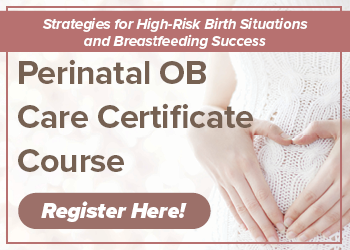up to 6.75 Pharmacology CE hours and 5.75 IBLCE L-CERPs!
Obstetrics is fast-paced and emotionally intense, frequently accompanied by unpredictable outcomes. That's why keeping up with constant advances in the field of perinatal care is essential for success.
This incredible course will strengthen your skills and give you the most up-to-date perinatal strategies for the best possible outcome before the next complication unfolds! You'll get the latest evidence-based updates with best practice guidelines from AWHONN, ACOG & ACNM to address each patient's unique needs.
Earn your OB Certificate of completion and unlock powerful new strategies for pregnancy emergencies, prescribing dangers, pre-term labor, traumatic birth, gestational diabetes, electronic fetal monitoring, hypertension, postpartum depression, and more!
Learn from the experts! The interdisciplinary team of 15 top-notch clinicians includes MDs, NPs & CNMs. Increase your confidence and unlock new insights to intervene quickly for the most serious pregnancy-related conditions.
Register today for this amazing perinatal course!
Perinatal OB Care Certificate Course
Click here for course objectives and outline
You'll get the newest updates and best practice guidelines to expertly guide your patients through a safe pregnancy and delivery.
You'll walk away prepared to deliver the very best perinatal care, with an enhanced skill set for:- High-Risk Pregnancy
- Fetal Heart Monitoring
- Traumatic Birth
- Sepsis in Pregnancy
- OB Medications
- Perinatal Diabetes
- Perinatal Loss
- Hypertension in Pregnancy
- Integrative Maternity Care
- Perinatal Mood and Anxiety Disorders
- Cervical Ripening and Induction
- Comprehensive course to advance your skills before the next perinatal crisis
- Expert advice from 15 amazing clinical experts... MDs, DNPs, CNMs & more!
- Innovative updates on a multitude of emergent OB conditions
- Up-to-date guidelines from AWHONN, ACOG & ACNM
- Must-know topics from complication management to the newest OB medications
- Earn your OB Certificate!
- Earn up to 50 total CE hours
- Includes up to 6.75 Pharmacology CE hours
- Unlimited access to this course… watch at your own pace and schedule
The Certificate Course offers high-quality education with flexibility to fit your learning needs.
Click here for course objectives and outline

Latch Secrets, Alternative Feeding Methods & Medication Safety
Includes 1.0 hour of pharmacology content
- Evaluate positioning for breastfeeding couplets based on infant preference and need
- New research suggesting the role of insulin in milk production
- Feeding alternatives for babies struggling with latch in the first days postpartum
- Medication safety: Considerations for availability to baby
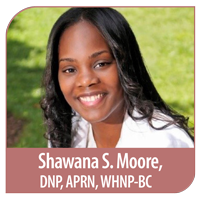
- Equity and Inequity in Obstetric Care… what is inequity and what it means for birthing people
- Background on Inequity in Obstetric Care… root causes of inequity in obstetric care for diverse populations of birth people
- Significance of Inequity in Obstetric Care… data/statistic information on morbidities and mortalities among diverse populations, short- and long-term impact
- Key Strategies to Provide Equity Obstetric Care… how to provide equitable obstetric care, resources for providers
- Creating a Plan to Provide Equity Obstetric Care… blueprint for success
- Call to Action… key takeaways to make a difference
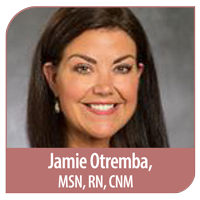
- Appropriate circumstances for elective induction of labor
- Fastest, safest, most cost-effective ways to accomplish cervical ripening
- Current oxytocin dosing protocols
- Artificial rupture of membranes: When, why and how

Best Practices to Minimize Impact to Mom and Baby
- Obstetrical emergencies & more!
- Effects on the maternal-infant relationship, breastfeeding & subsequent births
- Trauma perspective: Patient’s reporting degrading and inhumane experiences
- A specific plan of care for the sexually abused patient

- Why “take a breath and relax” is not a solution to elevated blood pressure
- Hidden realities of stress physiology
- Intersection between stress and hypertension
- Empowering your patients for an even healthier pregnancy
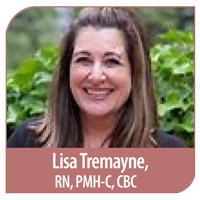
Can Perinatal Mood Disorders be Prevented?
- Perinatal mood & anxiety disorders (PMADs) affect over 20% of pregnant and postpartum women
- Women at risk for PMADs during pregnancy
- Validated screening tools
- Proactive interventions to potentially erase the emergency/crisis intervention for a newly postpartum mom
- Evidence-based multidisciplinary treatment modalities
- Referral resources and treatment that is appropriate for this temporary and treatable illness
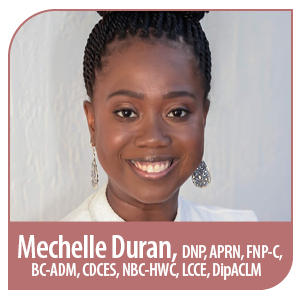
Click here for information about Mechell Duran
- About 2-10% of childbearing families will experience gestational diabetes
- Risk of adverse maternal, fetal, and neonatal outcomes
- Approaches to improve current and future health outcomes for families impacted by gestational diabetes
- Current evidence-based recommendations from antepartum through the postpartum period

- National and global issue of mortality and morbidity surrounding sepsis in pregnancy
- Leading cause of maternal morbidity and mortality
- Risk factors for sepsis in pregnancy
- Common sources of infection
- Preterm labor and preterm delivery
- Fetal infection
- Physiologic changes during pregnancy as they relate to sepsis
- Immunological adaptations of pregnancy
- Cardiovascular adaptations of pregnancy
- Impact on the maternal response to infection
- Key challenges related to the identification and treatment of sepsis in pregnancy
- Antibiotic resistance patterns
- ACOG and SMFM guidelines
- Screening
- Management guidelines for sepsis in pregnancy

- New data analyses on the course of “modern labor”
- Postpartum hemorrhage and prophylactic medication
- The future of preterm birth prediction
- Traumatic events take a toll
- Healthcare is a team sport
- Never lose passion for our profession

- Analyze difficult conversations and documentation hacks for clear communication
- Anticipate worst outcomes with powerful new tools
- Prepare for high-risk obstetrical complications
- Analytics of OB cases gone wrong
- License defense tactics to incorporate immediately

- Environmental Health…environmental and climate-related factors
- Exposure Pathway…what is putting women at risk…extreme heat, poor air quality, natural disasters, and more
- Environmental Health History…work, home, and recreation activities
- Strategies to address environmental health
- Legislation geared toward environmental factors
- National Institute of Environmental Health Sciences…reproductive health and research efforts
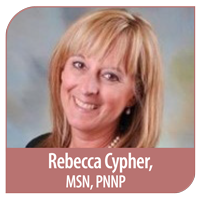
- Uncertainties surrounding intrapartum monitoring
- Potential adverse maternal and neonatal outcomes
- Overview of fetal monitoring principles and techniques
- Review of rhythms for interpretation and practice
- Maternal-fetal safety

Click here for information about Kathy Fray
- Therapeutic Modalities Basics… definitions of perinatal Integrative Medicine (IM) in maternity healthcare IMHC/PIM, five Categories of CAMs/T&CMs (complementary & alternative medicines)
- PIM during the Antepartum (Pre-Pregnancy & Pregnancy)… Preconception, Routine Pregnancy Care, Common Discomforts of Pregnancy, Pregnancy Pathophysiology, Labor & Birth Preparation
- PIM during the Intrapartum (Labor & Birth)… ‘Wholistic Birth-Rite’ Kit Prep, First Stage: Labor (latent & active dilatation), Second Stage: Birth (baby), Third Stage: After-Birth (placenta), Holistic support for Natural Labor & Normal Birth, Complementary support for Medical Complexities & Obstetric Complications
- PIM for Postpartum (Mother & Baby)… Maternal wellness & disease, Neonatal wellness & disease

The Latest Pharmacological Options for Pregnancy and Birth
- Best current medications to treat the “Top 10” pregnancy problems
- New FDA pregnancy safety labeling
- Analyze pre-pregnancy medications for safety
- Update on over-the-counter products for use during pregnancy
- Latest labor and delivery medication news

Understanding the Secrets of Natural Labor for Normal Birth
Click here for information about Kathy Fray
- Understanding obstetrically the medical repercussion consequences of the “Cascade of Intervention”
- Understanding holistically the natural flow of uninterrupted spontaneous labor
- Epidurals – understanding the consequences – are you really obtaining fully informed consent? Know the stats
- Re-defining how we explain to women the Four Stages of Childbirth
- Re-defining how to explain pharmaceutical and natural pain management options
- 'To Do' lists for Birth Practitioners and 'To Do' their expectant Clients - to achieve the best birth outcome

- Preeclampsia, Eclampsia, and HELLP
- Preterm Labor: Rapid Diagnosis and Intervention Can Make all the Difference
- The Perils of Shoulder Dystocia
- Post-Partum Hemorrhage
- High-Risk Induction
- Venous Thromboembolism in Pregnancy and Postpartum
- Placenta Accreta

- Post-birth warning signs and their implications for reducing maternal mortality
- Pathophysiology that places pregnant morbidly obese women at risk for dysfunctional labor
- Latest neonatal resuscitation: Urgent signs you can’t miss!
- Current recommendations for common causes of maternal mortality

- Perinatal Loss: Common Misconceptions
- Assessment: Exploring Clients’ Reproductive Story
- Treatment Planning for Pregnancy and Infant Loss
- Treatment Interventions: Helping Clients Move Forward, Not On
- Clinical Considerations

- Pregnancy: Physiological Changes Across the Trimesters
- Strong as an Expecting Mother: Strategies for an Active Pregnancy
- Contraindications and Warning Signs
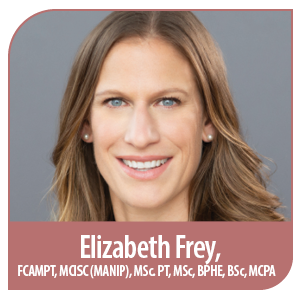
Click here for information about Elizabeth Frey
- Practical Management Techniques
- Why the inner core is often the missing piece of the puzzle
- How to connect with the diaphragm and pelvic floor to target incontinence, prolapse, and dyspareunia
- Exercise interventions to maximize strength and mobility
- Evidence-informed techniques you can use to optimize function
Click here for course objectives and outline
We’re that confident you'll find this learning experience to be all that's promised and more than you expected.

